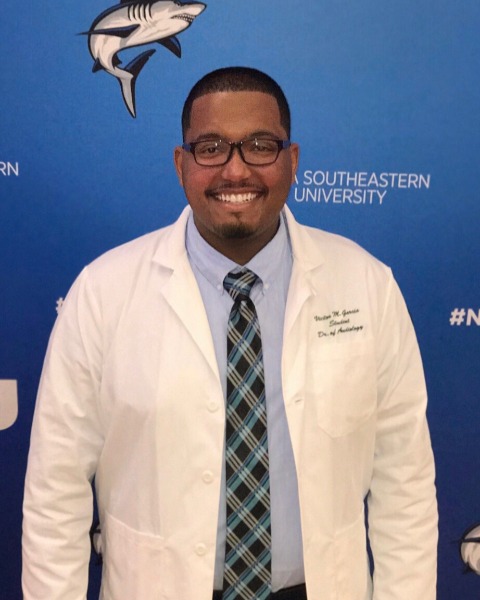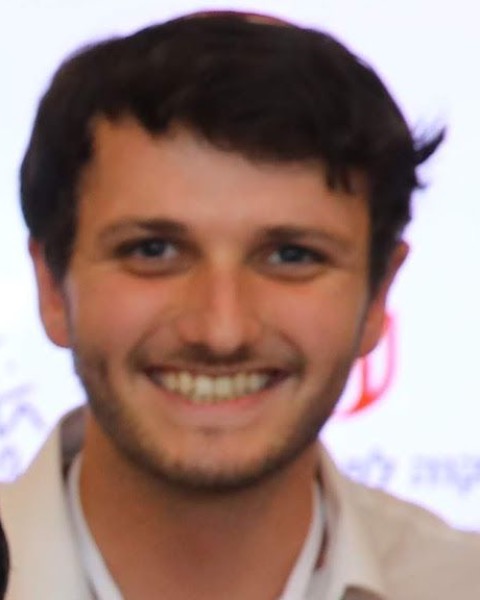Career/Personal Development (CPD)
PP1704 - Student Perspectives: Program Strengths and Weaknesses, Externship, and Extracurricular Involvement

Victor Garcia, BS
Audiology Student
Nova Southeastern University
Nova Southeastern UniversityFinancial Disclosures: I do not have any relevant financial relationships with anything to disclose.
Non-Financial Disclosures: I do not have any relevant non-financial relationships with anything to disclose.
Tyler Sponder, BA (he/him/his)
Nova Southeastern University
Nova Southeastern University
Fort Lauderdale, FloridaFinancial Disclosures: I do not have any relevant financial relationships with anything to disclose.
Non-Financial Disclosures: I do not have any relevant non-financial relationships with anything to disclose..jpeg.jpg)
Patricia Gaffney, AuD (she/her/hers)
Professor
Nova Southeastern University
Nova Southeastern University
Fort Lauderdale, FloridaFinancial Disclosures: I do not have any relevant financial relationships with anything to disclose.
Non-Financial Disclosures: I do not have any relevant non-financial relationships with anything to disclose.
Lead Presenter(s)
Presenter(s)
As Au.D. education evolves there is a need for more knowledge regarding the Au.D. curriculum, externship expectations, and future employment. The first purpose of this study is to offer integral information of current students in residential Au.D. programs and to determine whether the Au.D. curriculums are adequately preparing students for their future. Secondly, this study gathers data on student loans, program strengths and limitations, expected salaries, participation in professional organizations of current residential Au.D. students, and expected externship placement. Which will lead to a better understanding of the student’s point of view. regarding the AuD academic process.
Summary:
Rationale:
The doctor of audiology (AuD) has been established the mandatory minimum requirement for clinical education since 2007, the AuD pre-dates that for several years. Over the past twenty years the educational structure of the AuD has changed, however, it is meeting the needs of the profession by supplying students with an all-encompassing education. In addition, higher education has dramatically increased in cost while salaries have lagged. The purpose of this study is to evaluate the long-term trends in AuD education including externship expectations, strengths and weaknesses, and pre-graduation salary expectations of current residential Au.D. students. Students and graduates of residential AuD programs within the United States received an email or saw a link on Facebook, and other social media platforms with instructions and a link on how to complete the online anonymous survey. The survey was conducted through SurveyMonkey. The survey consists of a maximum of thirty-five student questions and thirty-nine graduate questions. Which, for the purpose of this poster, the data will be focused on the student questions. Skip logic was used to tailor the survey to the respondent. Descriptive statistics were used to analyze the results. This survey has previously been completed in: 2005, 2006, 2008, 2010, 2012, 2014, 2016, 2018, and 2020. The information obtained from the 2022 survey was compared to the previous survey data. Over 300 participants answered the survey this year with over 150 students who completed the survey. Students from various universities completed the survey. Externship continues to be a concern for students, consistently over the years, including this year. Students feel that they should be paid for externships yet there is a trend towards more students not being paid for an externship. Student loan debt continues to be a large variable. Although some students report less than ten thousand dollars of debt, approximately half of the students estimate they will have over eighty-five thousand dollars of student loan debt (from undergraduate and graduate school) when they graduate. There is an increase in student loan debt above $160k and this year the loan amount options were expanded to account for higher debt amounts. Finally, aspects of AuD strengths and weaknesses, as reported by current residential Au.D. students, were analyzed as well as trends from 2005. Importance: The information from this survey can be applied to positively change academic programs around the country and offer benefits to students when monitoring trends in the education of current residential Au.D. students. This data also serves to provide real data to concerns of rising tuition costs and the impact that it has on current residential Au.D. students prior to graduation. Innovation: The innovation to this study is that this repeated measure has been completed nine prior times yielding the only data like it in the audiology space, which will help have a better understanding of the concerns that current residential Au.D. students have as they are completing their doctorate program.
Methods:
Results: Learning Objectives:
